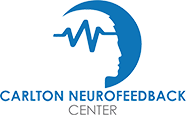If you’ve ever had a panic attack, you know how scary it can be. Panic attacks can happen to anyone but often come out of the blue.
Panic Attacks can be very frightening, with physical symptoms such as:
- chest pain
- a racing heart
- nausea
- feeling faint or dizzy
- shortness of breath
- trembling
- shaking
They can last 10 minutes or more, enough time that many times, people rush to the emergency room thinking they are having a heart attack. After the panic attack, a cycle of worry and anticipation may set in – leaving you keyed up, stressed, worried, and wondering if and when it may happen again.
What happens when you have a panic attack?
A panic attack is your body’s innate fight-or-flight reaction. It’s a protective mechanism that gets your body ready to flee a threat, like being chased by a bear. But it is not so great when you are driving a car or ready to board an airplane. The amygdala, a structure in your brain that responds to threats and dangers, fires up your autonomic nervous system. But sometimes, the result can be your nervous system overdrive. When your nervous system is overstimulated, it can be difficult to find balance or homeostasis. When this happens, panic attacks are the symptom of your nervous system’s overall dysregulation.
Does anxiety complicate the treatment of panic attacks?
Anxiety, which is a state of worry or anticipation, is an emotion that originates in the prefrontal cortex area of your brain. This is the area that is responsible for planning and anticipating. After a panic attack, someone can easily slip into a pattern of stress and anxiety, worrying about when the next attack will strike. It may be hard to tolerate this uncertainty, which increases worry and creates a vicious cycle that can keep emotions running high. If left untreated, anxiety can build up over time, causing sleep disturbances, muscle tension, fatigue, hypervigilance, and a heightened startle response.
How do I reset my nervous system if I’m all keyed up?
Neurofeedback Training, a form of biofeedback, is an easy, non-invasive way to reset your nervous system and end the cycle of stress, worry, and feeling overwhelmed. It is easy to get started and is a comfortable way to help your brain teach itself a new habit while you relax and watch a video. A course of treatment consists of a brain map or qualitative electroencephalogram (qEEG) to get a picture of where your brain waves may be out of balance. Typically, brains responding to panic and anxiety have too many beta waves. After this is determined, a training protocol is created, which involves 30-minute sessions relaxing in a quiet environment while watching a video, which sends visual cues to your brain through a video. The picture fades in and out as your brain learns instinctually to control the picture. It’s the equivalent of training at a gym (without sweat) and giving your nervous system the “muscle memory” it needs to regulate itself in the face of fears and worries. Because neurofeedback involves learning, it means that, unlike medication that wears off, the effects of the treatment last a long time, sometimes indefinitely.
We Can Help – Contact Us
If you’re navigating troublesome panic attacks and anxiety, call Dr. Ed Carlton of Carlton Neurofeedback Center at (703) 335-9149 in Manassas, Virginia, for a free, no-obligation evaluation and download a free eBook to learn more about this treatment modality, which has been around since the 1970s.
Our caring team of professionals is dedicated to helping each patient find relief from symptoms of panic attacks and anxiety so they can thrive and enjoy life again. If panic and anxiety are making your life unbearable and all the mindfulness training, yoga, and self-help books aren’t working, give neurofeedback a try and learn about the results we have had with patients who have had symptoms similar to those you are experiencing.


